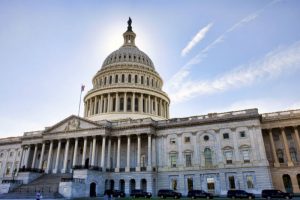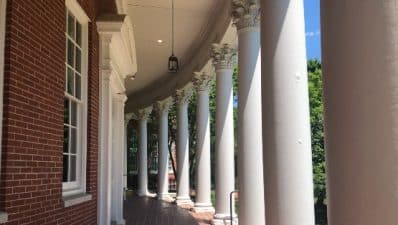
Falling deaths are the fourth leading cause of suicide, according to CDC statistics.
Bipartisan legislation aimed at reducing suicide attempts involving bridges by offering grants to state and local governments to fund nets and barriers has been introduced in Congress.
Don Beyer (D-Va.) and John Katko (R-N.Y.), the co-chairs of the House Suicide Prevention Task Force, and Grace Napolitano (D-Calif.), founder and co-chair of the Congressional Mental Health Caucus today re-introduced the Barriers to Suicide Act.
A study by the CDC in 2018 found that suicide rates in the United States have risen sharply since 1999.
More than 48,000 Americans died by suicide in 2018, according to the American Foundation for Suicide Prevention.
Restricting access to lethal means allows time for a feeling of crisis to pass, and for people experiencing suicidal thoughts to seek help.
Several studies show that installing physical barriers and nets on bridges commonly used for suicide, for instance San Francisco’s Golden Gate Bridge, can save lives.
“The Barriers to Suicide Act would help strengthen our national response to the alarming American epidemic of suicide,” Beyer said. “Restricting the means of suicide saves lives, and this bipartisan bill would help fund a proven method for state and local governments to do that. I hope my colleagues will continue to support this and other legislative solutions to prevent suicide.”
“As co-chair of the bipartisan Mental Health Caucus, I’m proud to again join my colleagues in introducing the Barriers to Suicide Act,” Katko said. “Nationwide, many bridges lack barriers or sufficient safety nets – which are proven to deter suicide attempts and are critical to saving lives. This measure establishes a competitive grant program so that states and local governments can apply for federal funding to build safety nets and barriers on bridges, and ensure that those already in place are effective.”
“Studies have shown that forcing a person in crisis to take even a few minutes to rethink a potentially fatal decision often results in that person never attempting suicide again,” Napolitano said. “These barriers serve as a critical deterrent and will surely save more lives.”
“AFSP commends Reps. Beyer, Katko, and Napolitano for being champions for suicide prevention and for introducing the Barriers to Suicide Act,” said Robert Gebbia, CEO of the American Foundation for Suicide Prevention. “Reducing access to lethal means is a proven, research supported component of suicide prevention. Having more bridge barriers will save lives.”
The Barriers to Suicide Act would establish a competitive grant program for states and localities to apply for federal funding to install nets and barriers on bridges.
Project funding would also be made explicitly eligible under two existing programs: the Surface Transportation Block Grant and the National Highway Performance Program.
It would also authorize a study to identify additional strategies to reduce jumping deaths.
Text of the Barriers to Suicide Act is available here, and a one-pager is available here.










